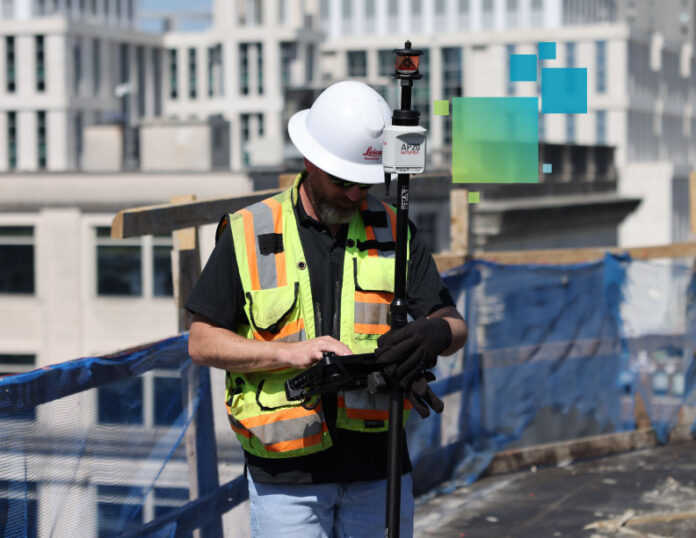In the fast-paced world of concrete construction layout, you have to work quickly and accurately to ensure the project stays on schedule. The rodbusters are waiting on you to do your part in getting the slab prepped to pour so they can do theirs. Plumbers, electricians, and other trades are onsite with their own total stations, which further complicates your layout process.
An innovation called the Leica AP20 AutoPole, a smart prism pole system for Leica Geosystems total stations, promises to significantly increase layout productivity compared to using a robotic total station with a standard pole through capabilities such as tilt compensation, automatic pole height readings, and unique target identification. But how much time savings can it actually deliver in the real world of concrete layout? Is it really worth the investment?
Nate Bush is a former concrete construction field engineer and line and grade manager who now guides contractors in technology adoption as a Leica Geosystems building construction specialist. He’s spent a significant amount of time testing the AP20 AutoPole in busy construction environments. Here’s his take on the new technology.
Pre-Pour: Layout Speed on Formed Concrete Decks Is Remarkable
Tilt compensation means you don’t have to plumb the rod, which provides significant time savings. And the AutoPole’s target recognition capability eliminates the possibility of locking on to another prism. “As fast as you can move the rod and process the data in your mind, you can get to your point,” Nate says. “I would say the time savings is up near 60%.”
“Using the AP20 with the auto point/line selection tool is another nice workflow to speed things up,” he adds. “The tool automatically selects the point for you, allowing you to get to the point faster.”
Post-Pour: Slab Topos and Column Layouts Are a Cinch
Imagine being able to collect points for slab topos as fast as you can walk. “It’s like having a walking stick while you walk across the slab,” says Nate. “Plus, you don’t have to worry about recording adjustments in the rod height; the AP20 takes care of that for you. This helps eliminate any elevation errors due to entering wrong pole height.”
Laying out columns and walls is also fast due to the AutoPole’s tilt capabilities, Nate says. “When vertical rebar is in the way, you can just tilt the pole to get around it and still get your shot.”
You Can Capture Challenging Points Safely
“There are times where we have to get in some tricky places to layout or as-built a point,” Nate says. “One example is collecting a slab edge on a steel deck that has handrail around it. With the AP20, we don’t have to cross the handrail to collect a point; we just tilt the rod.”
Another example is collecting a point on a wall, whether it’s an embed or sleeve. “The AP20 can even be tilted upside down if needed,” Nate says, “so you can reach points with the pole that previously would have required climbing a ladder.”
Other Trades Can Improve Layout, Too
Although Nate’s preliminary evaluations focused on concrete construction, he notes that other building construction layout trades can also gain speed, accuracy and safety benefits from the AP20 AutoPole. “Electricians and plumbers can cut their layout time by at least half for hangers and sleeves,” he says. “Considering how much layout they have to do on a deck, that’s a significant advantage.”






